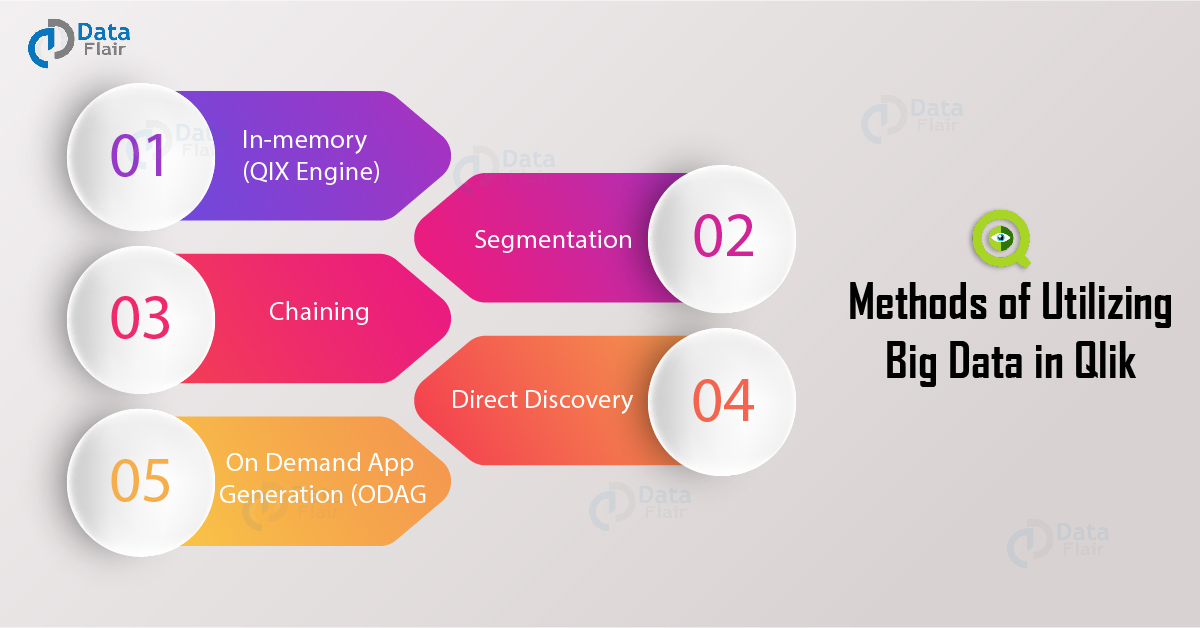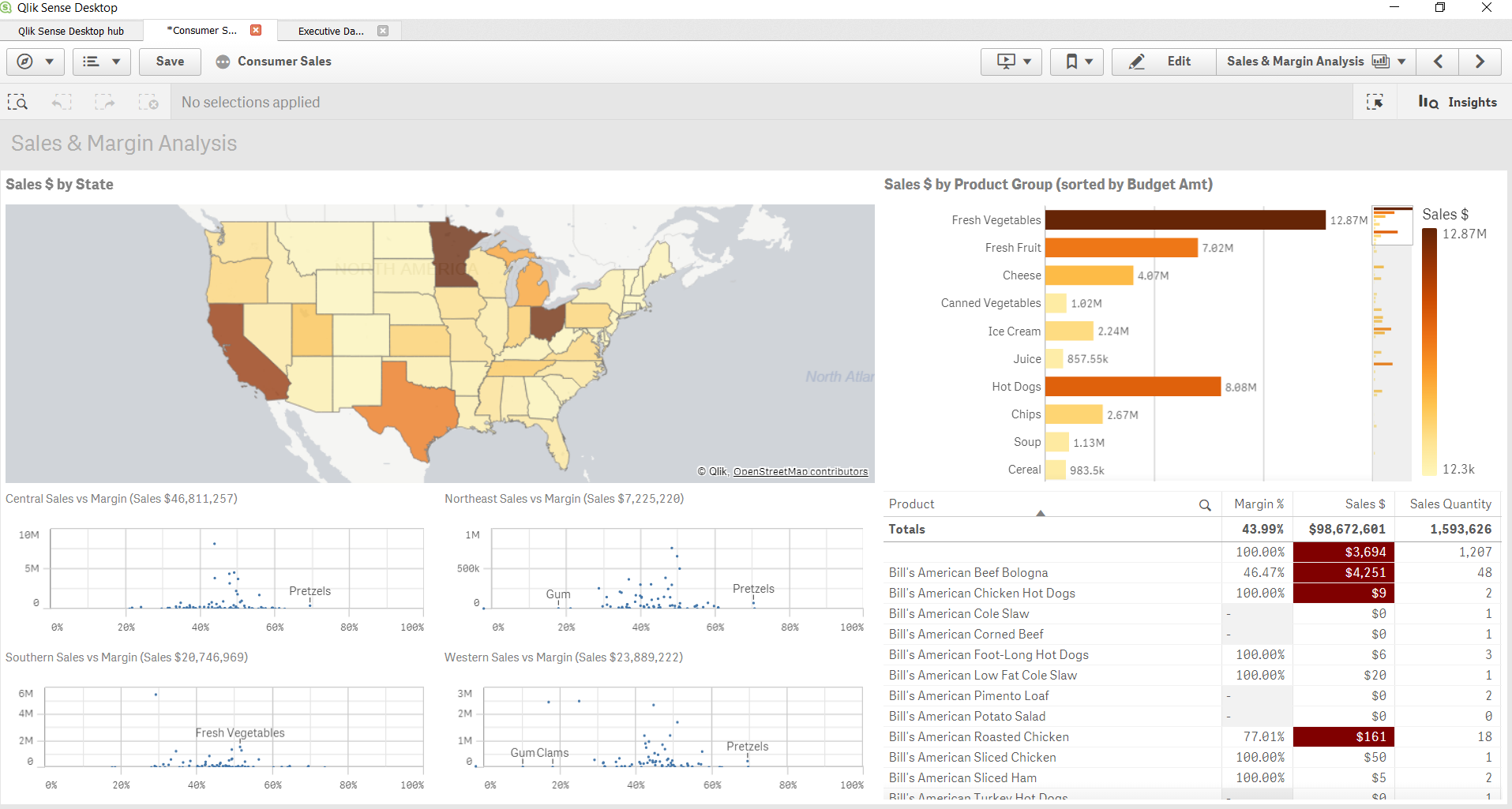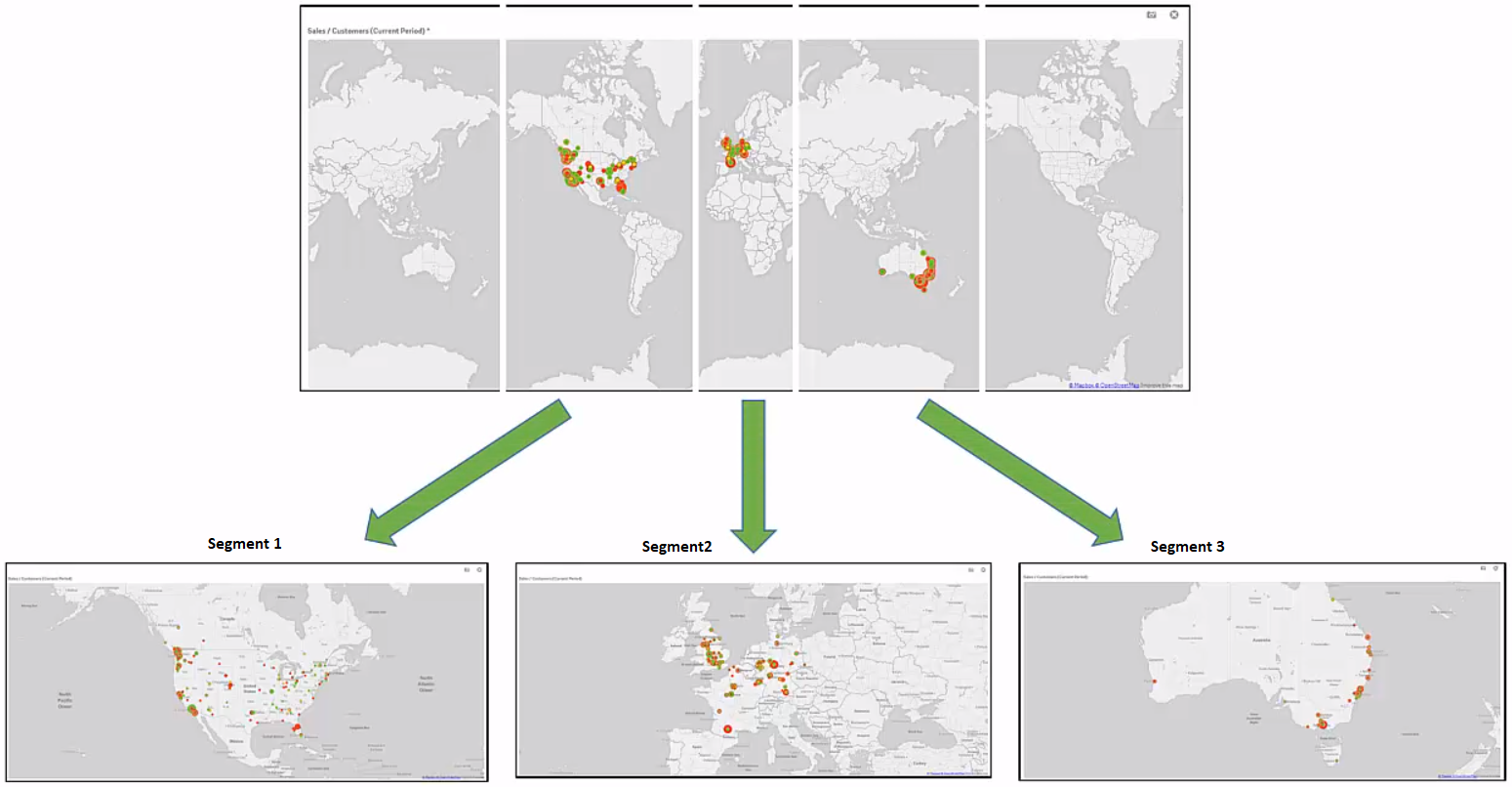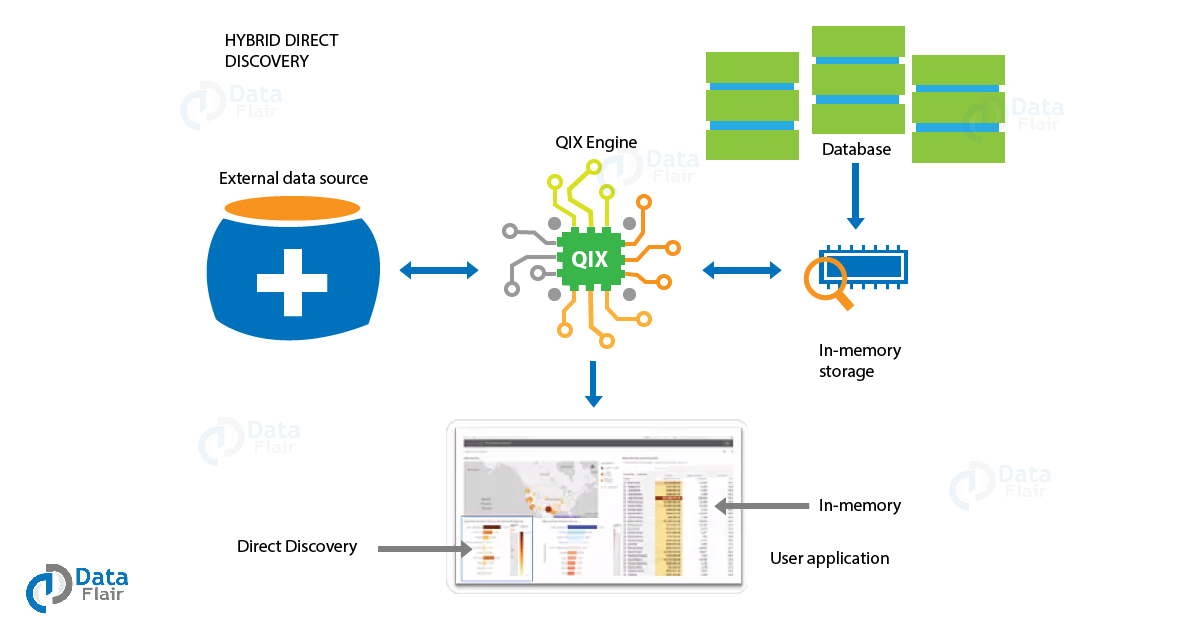Qlik Approach to Big Data – 5 Amazing Methods to Utilize Big Data in Qlik
FREE Online Courses: Transform Your Career – Enroll for Free!
Let us make an effort and shift our focus from the specific BI tools like QlikView and QlikSense to Qlik as a technology to Big data. Also, in this article, we are going to keep our discussion focused on Qlik approach to big data.
Here we will discuss different methods of utilizing Big Data in Qlik and several benefits of Qlik for Big Data.
So, let’s start with understanding how Qlik approach to big data and what it has to offer its users.
Qlik Approach to Big Data
Qlik is known to be a pioneer in data analytics and management. As it has reached a point where its user base has grown to be of 48,000 customers spread across 100 countries.
Qlik provides efficient BI solutions for both tech and non-tech users. Who use it to explore data and comprehend the story behind it. Qlik solutions offer data exploration, visualization, discovering insights. Also, lets users make informed decisions based on their analysis to foster their businesses.
As we know, billions of terabytes of data are being generated by all sorts of businesses worldwide which is referred to as big data in common terms. Businesses see big data as a potential source of information regarding the requirements and behavior of their customers, suppliers, products, partners, and markets.
This makes big data a strategic and economic asset for organizations. Thus, organizations are always in search of efficient business intelligence technologies.
Which lets everyone in the enterprise work with data and give them user-friendly tools to transform and visualize data to provide it relevance and context.
And for the same reason, enterprises have turned to Qlik and the solutions offered by it. Qlik has ties with over 1700 partners, many of which are big data-centric tools such as Cloudera, Hadoop, Google BigQuery, and AMS.
What are the Methods of Utilizing Big Data in Qlik?
When it comes to dealing with big data, a common concern is that not all the employees in an organization are adept data scientists or even close to knowing anything about it.
So, there must be such big data analytics and techniques which enables as well as empowers every user to conduct proper operations on data and generate informative reports from using it.
In other words, they need a simple, user-friendly guided analytics environment to help them manage and understand the big data.
Another challenge faced by users while working with big data is they were expected to know which part or segment of the entire big data repository they want to work with, which is not an easy task for non-technical users.
To overcome such issues, Qlik has come up with certain methods which can be used individually or in combination to work with big data.
1. In-memory (QIX Engine)
Qlik’s Indexing Engine (QIX) has the capability of compressing big data to ten percent of its original size which is enough for some customer’s use. Qlik solutions work by accommodating the compressed data into the in-memory and load it from there.
2. Segmentation
Big data get easy to handle and visualize by dividing a large application into small segments based on categories.
For instance, if an application is showing the geographic data of the entire world, you can break it down into small segments per country. Thus, this process is called segmentation.
3. Chaining
Chaining is contrary to segmenting. It is linking different segments or subject-specific views to one another. It forms a logical association between application segments.
Big data analysis and handling become easy by first segmenting larger applications into subject-specific views and then linking them with each other through chaining.
4. Direct Discovery
Another way to handle big data is through direct discovery. Here, some data (small tables) still resides in the in-memory but a large chunk (large tables) resides in the database.
A user gets to directly access the external database when in need of the large tables. It is known as a hybrid approach as it brings together the in-memory system with the external database storage system.
5. On-Demand App Generation (ODAG)
A unique method, where an on-purpose application generates having only the section or data set that you require to work with. There are two divisions of this process:
First, you have a Selection app, which is a portal where data is been sorted into categories and sections such as customers, product, vendor, time period, geography etc. You can select the data set of your choice.
Then, in the second part, a new application is launched having only the section of data that you selected from the database through the selection app.
You can work with the data set as you like and create reports and dashboards. You can always go back to the selection app and work with new sets of data.

Advantages of Qlik for Big Data
Qlik approach to Big Data is incomplete without discussing its benefits for it. One can think of many advantages of using Qlik solutions for big data. We have tried to list out a few for you.
1. Qlik gives an associative and augmented experience to the user by assimilating data from various data sources and associating it logically. The associative engine efficiently gathers data from different data sources and indexes it for a better understanding of the data structure.
2. Qlik supports a wide range of user base and offers a lot of services such as guided analytics, self-service visualization, and exploration, collaboration and reporting, geographic and advanced analytics, AI capabilities (Qlik Cognitive Engine), data integration etc.
3. It helps in making sense of big data by empowering the users with capabilities to fetch data from varies sources and use it to extract meaning from it.
4. Big data is a reservoir of important information and insights in business. Technologies like Qlik helps the business users to access that data, model and structure it, then finally represent it visually and explore it better.
5. Qlik tools empower every user in the enterprise, regardless of their skill set, explore and analyze big data efficiently.
6. It can connect to different types of data sources like Excel, XML. Or, big data sources such as Cloudera, Hadoop, Teradata. App-specific sources such as SAP, Salesforce etc.
7. Qlik’s associative engine enables associations between data tables which makes navigating within large data sets very easy. The user doesn’t have to drill-down in complex rows and columns of large data tables. Thus, it makes big data much more manageable.
Solutions Offered by Qlik for Big Data
Qlik currently offers many platform-based solutions aimed at aiding developers or purposes like data management, data visualization, etc. Some latest tools offer by Qlik are-
1. QlikView: A highly interactive tool for data discovery and guided analytics.
2. QlikSense: A self-service, user-friendly data analytics and, visualization platform.
3. QlikCore: Development platform for customizable and embedded applications.
4. Qlik Data Catalyst: An enterprise data management solution. There are some value-added products provide, to enhance the capabilities of existing tools.
5. Qlik NPrinting: Report generation and distribution tool for Qlik Sense and QlikView.
6. Qlik GeoAnalytics: An advanced mapping and location-based analytics platform for Qlik Sense and QlikView.
7. Qlik Associative Big Data Index: Enables binary indexing on data stored in Hadoop clusters or data lakes for fast data discovery.
8. Qlik DataMarket: Provides Data as-a-service (DaaS) from comprehensive data libraries from different data sources on a subscription basis.
9. Qlik Connectors: Provides connectivity to internal and external data sources. It enables connection with web-based, app-based (Salesforce, SAP), file-based, cloud-based data sources.
Summary
Qlik is a robust technology aiming at providing as many customers a hassle-free data analytics, management, and visualization experience.
One major advantage of using Qlik solutions amidst various other BI platforms is Qlik’s scalability and flexibility to adapt to changing big data landscape.
We hope this explanation of “Qlik Approach to Big Data” was helpful to you and answered all your questions. If you have any query, tell us through comments.
Did we exceed your expectations?
If Yes, share your valuable feedback on Google






